

PUBLISHER
Pawan Luthra
EDITOR Rajni Anand LuthraMELBOURNE COORDINATOR

Preeti Jabbal
CONTRIBUTORS



Pawan Luthra
EDITOR Rajni Anand LuthraMELBOURNE COORDINATOR

Preeti Jabbal
CONTRIBUTORS
ADVERTISING
WA Sales Manager

Ram Naidu 0435 581 571
National Sales
Sukesh Thapliyal 02 9262 1766
Advertising Assistant
Charuta Joshi 02 9279 2004
Indian Link is a fortnightly newspaper published in English. No material, including advertisements designed by Indian Link, may be reproduced in part or in whole without the written consent of the editor. Opinions carried in Indian Link are those of the writers and not necessarily endorsed by Indian Link. All correspondence should be addressed to:
INDIAN LINK MEDIA GROUP
Level 24/44 Market St, Sydney 2000
GPO Box 108, Sydney 2001
Ph: 02 9279-2004
Fax: 02 9279-2005
Email: info@indianlink.com.au
Two of the most high-pressure jobs in Australia have been said to be that of the Prime Minister of the country and that of national cricket captain. Come to think of it, that is probably true for India too.
So, when one of them is exposed to have lied on the job, over time, people begin to take that for granted. And here, I am referring to the politician holding the highest office. In Australia, in modern day politics, it started with John Howard when he imposed a new tax on superannuation and called it a surcharge.
Later, when Prime Minister Julia Gillard broke her pre-election promise of no carbon tax to propose a tax on carbon emissions, the public went up in arms, largely egged on by the then opposition leader Tony Abbott.
With time, in the last 12 years, people’s attitude about politicians and politics has
become more cynical, and the trust in what they say and do is at an all-time low. The politicians themselves don’t seem to be helping; they are pandering to the demands of a 24-hour media cycle rather than finding and implementing long-term solutions to problems, however unpalatable it might be to the public in the short term.
The loss of faith is so acute that even when President Trump does what he promises, no matter how impractical and abhorrent those actions, our belief in politics wanes further.
And then there’s the clergy, which is beleaguered with allegations of child sex abuse and cover up. And let’s not forget the financial institutions such as the major banks that are facing a Royal Commission following revelations of management exploiting customers to reach their goals.
The sad truth is that one has got used to these misdemeanours. Indeed, it wouldn’t be wholly incorrect to say that we have become anaesthetised to these issues.
Even sporting codes have had their problems with winning the public’s confidence. Doping scandals are aplenty, and public distrust shoots through the roof if
the athletes come from any of the former Eastern Bloc countries. Codes such as AFL have struggled to shake off the tags of racism, and rugby league of player misbehaviour.
However, for a long time, Australian cricket has largely been free of such issues. Sure, there have been issues of sledging and mind games against visiting teams, but these have been put down to the tough sporting culture in this nation.
A team that withstood the onslaught of the bodyline attack and gained a reputation of fighting when their backs are against the wall, won the respect of all.
Smart branding such as the revival of the baggy greens under former captain Steve Waugh further added to the folklore of the team. Even management positioned the emerging shorter format of the game, the Big Bash League, as family friendly.
But it all came crashing down when the country’s cricketing heroes openly admitted to cheating to win a game. The outcry has been huge and the fallout is still ongoing. An icon of trust has been shattered, it may be rebuilt again but how long that will take, only time will tell. For now, all we can do is wait and watch.
SAGAR MEHROTRA asked on Indian Link Radio: Have you forgiven Steve Smith in your books?

Ashok Pillai wrote: I strongly think that Smith and Warner will appeal against the sentence and it will be shortened. My guess is that Smith will return in less than 6 months even though the captaincy ban of 2 years will remain intact
Rachit Mehta wrote: Whatever u do on-field/off-field should be within the laws of cricket.
Sonali Shah Thakkar wrote: Galti ki hai toh bhugatni padegi (Do the crime, do the time). Their lives might not be the same again. They might be good men but they have to pay for the “lapse of judgement”. They are role models for many and having no penalty to face would have set a precedent that it’s ok to cheat. We all want to teach our kids to be honest and they need to teach the same. The public won’t spare anyone who does anything wrong and that’s what you have to contend with in the senior positions. Yes, their ‘crime’ may not be as severe as match-fixing but cheating to win, done in all good intentions, is not acceptable. Azharuddin and Hanse Cronje were both great players and excellent captains but aaj bhi jab unka naam aata hai (today when their names are uttered) the first thing we think of, is match-fixers.
Ajay Punj wrote: This is not new. Sledging etc has gone on for long in the name of mind games. They have shamed themselves, their country and the game of cricket. Test cricket is played these days in such a way that you have to win at any cost, fair or unfair. Was the public meltdown coached by the handlers/media advisors? Poor Bancroft, I feel for him. He did as instructed by his seniors. But what he did was unpardonable.
Shivdev Kler wrote: High praise for this young cricketer. We are all human, we all make mistakes. Smith deserves our forgiveness.
Sagar Mehrotra concluded: This incident is not going to fade away from our memory that easy, as you mentioned with the example of Azhar or Sreesanth or Cronje. I say this is just the tip of the iceberg: the culture that Australian cricket nurtures is far from fair go.
Writer Roanna Gonsalves has been shortlisted in the NSW Premier’s Literary Awards for 2018 for her book The Permanent Resident. Pearl Fernandes wrote: Congratulations Roanna Gonsalves!
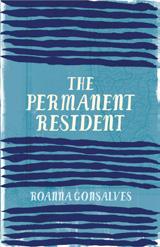

Amazing!
Rajni Luthra wrote: Woohoo Roanna! Roanna Gonsalves wrote: Thank you for your generous words, dear Indian Link
Do you think the punishment meted out to Steve Smith and David Warner is too harsh?

No (58%)
Yes (42%)
Post a picture on Instagram of Indian Link at home, work or anywhere else in your life, using the hashtag #indianlink. We’ll select the best pic and publish it here.
This time’s entry is from @anonymouspumpkin: When a thoughtful headline stops me in my tracks


On the treadmill, thought I’d watch #SAvsAus. Watched two overs. Switched to Arsenal vs Stoke Harsha Bhogle, Indian cricket commentator
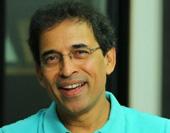
PAWAN LUTHRA wrote why women, more than men, need to learn to handle their own finances

Neelam Rehal wrote: I completely agree with Mr Luthra’s opinion on women becoming financially independent. And I speak from personal experience. A very close friend whose husband passed away rather unexpectedly found herself in dire straits as she had very little idea about how to manage finances. Worse, she didn’t even know about her husband’s liabilities. It was only after we friends rallied behind her that her financial situation stabilised. Taking control of your finances may seem intimidating at first, but with an open mind and desire to learn, anyone can do it.

DIPANJALI RAO wrote that changing gender expectations was essential to achieve parity
Krish Na wrote: Best read of the year!
Deen Parast wrote: In Indian culture, the house is to be kept clean so that good forces of health, wealth and prosperity are invited inside each day. This is why our mothers and grandmothers used to wash the front area of the door each morning and put auspicious signs by chalk powder. This is ancient wisdom.
HARSHAD PANDHARIPANDE wrote about how an ABC Radio team was not granted Indian visa
A reader (name and address withheld on request) wrote: Congratulations on commissioning a brave story about visa refusal to Philip Adams. Harshad has written it brilliantly and nailed them. My admiration.
Indian Link Radio anchor KASHIF HARRISON reported on parade and the Indian float put up by LGBT support organisation Trikone Australasia Trikone Australasia wrote: Thank you for helping us make this Mardi Gras even more special, @indian_link!

On the Harbour Bridge’s 86th birthday, we asked our online readers to guess which Hindi film had this as its shooting location. All got it right with HEYY BABYY, but some readers got creative!
Vandana D’souza wrote: Three men and a baby :D Manju Vinay asked: Tell us who is the baby.
Natasha Kaur wrote: Heyy Babyy, an awesome movie done in Sydney
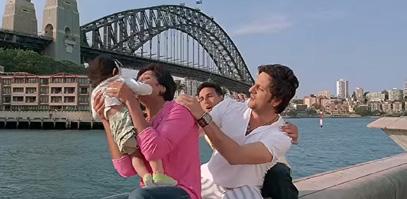
We shared that Air India is adding a new Saturday flight on its Sydney-New Delhi sector.

Mahesh Rohira asked: When will Melbourne Mumbai start?

Senthil Kumar wrote: Shouldn’t it fly to either Kolkata or Chennai? (both being entry points).
Proud to stand alongside you as a champion for global education Priyanka Chopra, with ex-PM Julia Gillard, at Global Education & Skills Forum in Dubai

Post a picture on Instagram of Indian Link at home, work or anywhere else in your life, using the hashtag #indianlink. We’ll select the best pic and publish it here. This time’s entry is from @sukeshthapliyal
I’m studying in the university in which Dhoni is topper Cricketer Dinesh Karthik, after sealing a last-ball win for India against Bangladesh

After a terrific start to the Games by Mirabai Chanu, who won India her first gold in the women’s 48kg weightlifting on 5 April, other sportsmen of team India are following suit. The Manipuri powerhouse left the competition far behind by setting Games and Commonwealth records in the snatch, clean and jerk as well as the total. She registered 86kg in the snatch and 110kg in clean and jerk for a total of 196kg.
Chanu broke six records in each of her six attempts in the competition, obliterating the previous Games record of 175kg set by Nigeria’s Augustina Nwaokolo at the 2010 edition by a considerable distance.
Despite a tough life, the 23-year-old from Imphal East district has fought hard to achieve her current status. Inspired by India’s weightlifting icon Kunjarani Devi, who also hails from her native Manipur, Chanu took to the sport in 2007 and has not looked back since. Her win has prompted the people of Manipur to demand a Deputy Superintendent of Police (DSP) post for her so she could stay in the state. Chanu is currently employed by the Indian Railways.
Congratulating the lifter, Chief Minister
N. Biren Singh said, “With her spectacular performance, Mirabai has done the country and Manipur proud. She is a true Manipuri.”
He has declared a cash prize of Rs. 15 lakh for the lifter.
Former Chief Minister Okram Ibobi Singh said all Indians are proud of her performance.
“During my tenure, boxer M.C. Mary Kom was promoted to Superintendent of Police (SP). We had also constructed a sports complex in all districts... Being a poor state we gave sportspersons all we could with our limited resources.”
Sanjita Chanu landed India its second gold medal in the 53kg weightlifting category. Hailing from remote Umathel Kakching village in Kakching district of Manipur, Sanjita took to weightlifting in 2006. But her path was always a difficult one as the 24-year-old was dogged by poverty and lack of facilities throughout her growing-up years.
With five children to look after, Sanjita’s parents were hard pressed to meet all her expenses from their meagre resources. Her mother Leima said she used to work hard
from morning to night to meet Sanjita’s needs and also encouraged her to push harder during training.
“Being a poor family, we could hardly afford nutritious food for the sports girl. Time and again she asked me whether she should give up her first love of sports. But I always replied that she should continue doing the exercises. I ran from pillar to post to provide her food and other items for her exercise,” Leima said.
She was the victim of official apathy as well. The Manipur government offered her the post of a police constable after she won gold in the women’s 48 kg category at the 2014 Commonwealth Games in Glasgow, but the family regarded this as an affront. Leima said she exhorted Sanjita to reply to the perceived slight in the best way possible - winning more medals at domestic and international tournaments. And that’s what the Manipuri star, who won her second Commonwealth Games gold, did. Chief Minister N. Biren Singh has declared a cash prize of Rs. 15 lakh for Sanjita as well.
The Indian women’s table tennis team
was by far the best surprise since the Games began last week. Manika Batra shocked the Singapore team that has never lost in the Commonwealth Games since the sport was inducted in the program way back in 2002. The doubles pair of Mouma Das and Madhurika Patkar also won gold against defending champs of Singapore.
MANU BHAKER Gold, women’s 10m air pistol
Haryana’s 16-year-old Bhaker produced a spectacular performance, setting a new CWG record with a total of 240.9 points in the final round on 8 April. Bhaker was in fine form coming into her maiden CWG appearance, having won 10m air pistol and 10m air pistol mixed event gold medals at the ISSF World Cup earlier this year in Mexico.
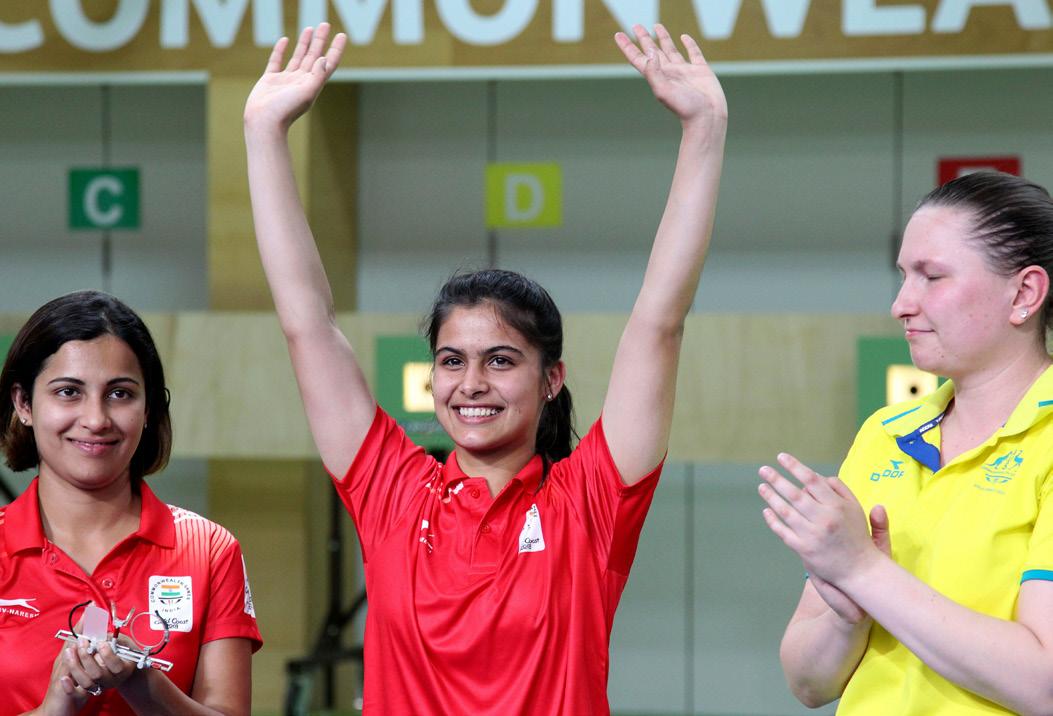
“I am very happy... it is my first Commonwealth Games and I won with a qualification record also. The gap between me and the second competitor, that was a huge margin. So it was a pleasure winning this medal for India and I am very, very happy,” Bhaker said.
Bhaker’s father, Ram Kishan Bhaker said she has never returned empty-handed from any tournament. Delighted at the 16-year-
It’s raining medals for the Indian contingent at the ongoing Gold Coast Commonwealth Games 2018 . And what’s more, the women athletes are the stars of the Games so far, clinching metal in table tennis, shooting and weightlifting. As we go to press, we are watching out for India’s other medal hopefuls in boxing, badminton and athleticsManu Bhaker wins the gold medal in the women’s 10m Air Pistol. Compatriot Sidhu Heena takes silver, and Australia’s Elena Galiabovitch, bronze. Photo: AP
old’s feat, the senior Bhaker said, “It is easy to boast after a win. But the truth is she never returned empty-handed from any tournament, whether it was the school or national level.”
He added that he had always encouraged the youngster to enjoy her game and play freely without bothering about the outcome.
“Before leaving for Gold Coast, I asked her to enjoy her game and not worry about the result. Winning and losing are part of any sport,” he said.
On being asked if he found Manu under any kind of pressure ahead of her debut in the Commonwealth Games on Sunday, Ram replied in the negative.
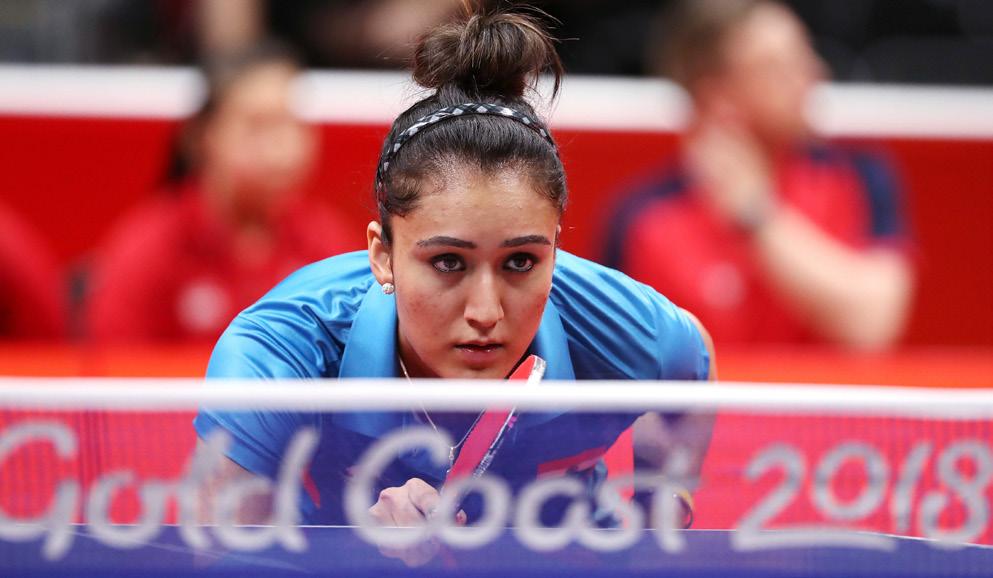
“She never takes pressure and always plays freely. She just focusses on each shot rather than the whole game. Her main focus is on bettering her effort in each shot,” he said. Opening up on his plans of celebrating the gold medal effort, Ram said: “There will be grand celebrations once Manu returns to her native in Goria, Haryana.”
Punam’s gold also meant that the country has five gold medals in an edition of the CWG for the first time. The 22-year-old lifted a total of 222 kg which included 100 kg in snatch and 122 kg in clean and jerk.

The Nepal-born shooter, who was a 50m pistol gold medallist at the 2014 Glasgow CWG, clinched gold for India on 9 April at the Games. He also made the final of the same event at the Rio Olympics where he finished eighth.
Other gold medallists include weightlifter Venkat Rahul Ragala (men’s 85 kg category) and Satish Kumar Sivalingam (men’s 77kg category).
Experienced Sidhu registered 234 points to make it 1-2 for India at the top of the podium. It was her first medal at the CWG. She made her CWG debut in 2010 New Delhi edition.
During the qualifications, Bhaker topped the qualification stage with a total of 388 points. Sidhu qualified at the second spot with 379 points.
On April 9, Pardeep Singh claimed a silver medal in the 105kg men’s weightlifting event. Singh, who started off as a teacher at a government school in his village in Punjab, started off uncertain but gained momentum in the second attempt.
Weightlifter P Gururaja opened India’s medal account on the first competition day, claiming a silver in the men’s 56kg category.
Ravi’s bronze medal in the 10m air rifle event ensured that India bagged its third medal on the opening day of the shooting competitions. He shot a total of 224.1 to finish behind Australian Dane Sampson (245) and Bangladesh’s Abdullah Hel Baki (244.7), who won the gold and silver, respectively, at the Belmont Shooting Centre. He had taken bronze in this event at last month’s International Shooting Sport Federation (ISSF) World Cup in Guadalajara, Mexico, as well.
VIKAS THAKUR Bronze, men’s 94kg weightlifting
India’s Vikas Thakur took bronze in the men’s 94kg category of the weightlifting
competition at the 21st Commonwealth Games. Thakur registered a total of 351 kg which included 159 kg in snatch and 192 kg in clean and jerk. Thakur, who had taken silver in the 85 kg division at the 2014 CWG in Glasgow, Scotland, registered some of his best lifts in international competition.
The 18-year-old from Haryana made news by becoming the youngest Indian weightlifter to claim a Commonwealth Games medal. This is the youngster’s first ever CWG medal. Interestingly, Lather trained as a diver at the Army Sports Institute but was coaxed into trying his hand at weightlifting by his coaches.
While Jitu Rai won a gold in the same event, Mitharwal trailed with a bronze medal. He finished first in the qualification round after shooting 584 points to equal the Commonwealth Games record.
The doubles pair of Sathiyan Gnanasekaran and Harmeet Desai have taken the lead in the men’s table tennis event against Singapore’s Xue Jie Pang and Shao Feng Ethan Poh. Sathiyan will now go up against Ning Gao in the singles match.
Hima Das, who’s participating in her first 400m international competition at the Games, has qualified for the semi-finals in the event.
Five-time world champ MC Mary Kom has assured herself of a medal at the Games this year by making her way to the semifinals of the boxing event. Although ecstatic about a confirmed medal, she is confident of winning gold.
Saina Nehwal performed brilliantly against Singapore on 7 April to breeze through to the badminton mixed team event finals. The women’s hockey team are one to watch, after their stunning victory over Olympic champions England in its third Pool A match of the 21st Commonwealth Games on 8 April.

The first thing that springs to mind is the colours that greet you –purples, reds, yellows and blues. And then it occurs to you, ‘But of course!’ Australians love a great splash of hues (and let’s face it, so do Indians) so why should this be any different?
From April 4-15, as part of the Gold Coast Commonwealth Games 2018, some 6,500 athletes will call the Games Village home. In fact, with the facilities at their fingertips, getting them to leave the Village may well be a challenge! We decided to take a look ourselves and bring you a little peek of the place where some of our most talented sportspersons are going to live for two weeks.
There are three zones in the Village: Operational, Residential and International. It is quite obvious that careful thought has gone into incorporating natural elements of water, wind, sun and shade into the construction within the zones.
The Operational zone houses a comprehensive, airport-like security system that athletes will be required to
clear. Special holding areas for team managers to check in and receive passes ensure that athletes focus on what they do best: sporting.
Once you’ve cleared security, make your way up to the residential zone. Named by Griffith University students, the residential zone is further divided by iconic Queensland features: Beach, Outback, Rainforest, Reef, Sunset and Surf. Mind you, it’s easy to lose your way in the labyrinth, but the designers and architects involved in creation of this masterpiece have used cartoon-like graffiti to indicate pathways to the different residential zones.
The 3,300 rooms are comfortable with two single beds and basic amenities. The residential areas boast of games-first cooling residential pools and state-ofthe-art digital spaces. At the heart of the zone, an artwork that reflects Gold Coast’s hinterland waterfalls and natural rock formations spans a water fountain instalment, it’s quite the spectacle.
Close by, the seven-hectare green area features enough space to hold concerts and live stage entertainment. Recreational options are aplenty, with dedicated rooms such as the Games Room that’s filled with arcade and video games, Village Gym that is upkept by professional staff, and the Athlete Recovery area that provides massages and consults from Sports Medics.
There’s also a dental van, doping test area and a poly-clinic that provides regular and emergency support 24 hours a day. This year the Games are also hosting the largest ever population of para athletes for the para-sport programme, so the entirety of the zone is fully accessible with specific prosthetic services as well.
Athletes will move around the Village in a fleet of shuttles and Games-branded cars as well as via the Gold Coast light rail network (G:link) station right across the road.
The last stop is the international zone, where players can mingle with friends and family and kick up their heels after a long day on the field. They can also enjoy events together, shop or visit the salon if they like. The zone also has multi-faith rooms, with one featuring artwork that represents the One Million Stars campaign to end violence.
Daytime cafes will convert to bars at night to keep the party going till the wee hours and promote camaraderie within and between teams. The main dining area has catering options to suit every taste, including a special section dedicated to Indian food!
Every requirement is taken care of by the 300-odd chefs, including dietary, religious and medical, among others. On the way out, you also pass by dedicated country-specific rooms, with Australia’s room getting a front seat to the house! Those green and yellow colours are unmissable, to say nothing of the cute koala sticker to indicate authenticity. These spaces together will see every sportsperson, regardless of sport, come together and unite through patriotism.
Each player also gets to take home a canvas uniquely designed by a Griffith University student and a Commonwealth Games Branded Quilt with an indigenous design.
The Village now hosts Australia’s first 6-star green rated building. With over 1,06,423 trees planted on site; the area is a breath of fresh air, quite literally.
The accessibility decision was a purposeful effort, not only to the 300 para athletes that visit but also to their families, by including accessible sinks in kitchens and hearing loop systems in major meeting rooms.
With so many meals prepared in a day it was imperative to have a comprehensive waste management plan including industry leading waste streams to maximise recycling and avoid landfills.
The Parklands redevelopment where the village now stands has 1,170 apartments that after the Games will become homes, many of which will likely be for Gold Coast Private Hospital staff and Griffith University students. The hub of retail and commercial space is likely to expand and integrate into what Queensland calls Gold Coast Knowledge and Health Precinct. All these units are available for purchase and rent soon after.
Last word: the one-hour tour was simply not enough to see all the amazing things the Games Village has to offer! One thing is for sure: we’re in for one hell of a time with this event. And if you haven’t already booked your tickets, now’s the time.
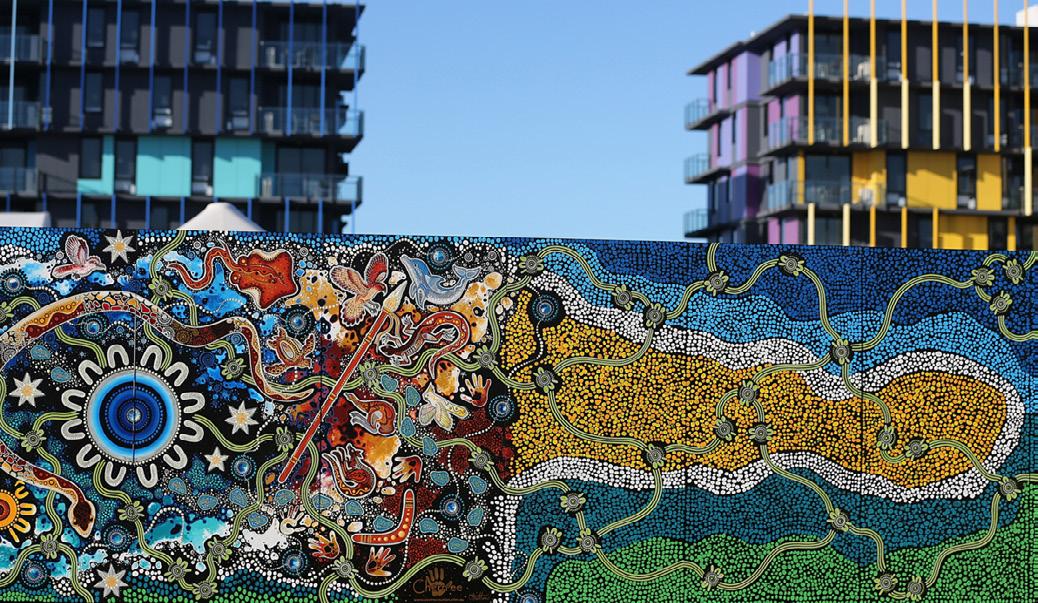
Cooling pools, cafes that turn into bars by night, arcade games and more… here’s a quick peek inside the Commonwealth Games Village
The Village now hosts Australia’s first 6-star green rated building. With over 1,06,423 trees planted on site; the area is a breath of fresh air, quite literally

player in my category!”
BY RAJNI ANAND LUTHRAThere’s only one major preoccupation in Rupinder Kaur’s life these days. Training.
Only days out from the big event, she’s currently training three times a day every day.
The 33-year-old is part of the Australian wrestling team for the upcoming Commonwealth Games at Gold Coast.

“I’ve been working with the national coach as well as my personal coach in recent months,” Rupinder told Indian Link “I’m giving it my all.”
Looking forward to her second Commonwealth Games, Rupider admitted she feels stronger now than she did at Glasgow in 2014. She credits this to her young Russian-origin coach Kostya Ermakovich, himself a seasoned international competitor.
Rupinder will take the floor in the 50kg category, alongside an old friend from India, Vinesh Phogat, who was made famous by a certain Bollywood hit film not so long ago.
Does she see Vinesh as a major competitor?
“We’ll see on the day, won’t we!” she laughed. “There’s also Jessica MacDonald from Canada and another strong Nigerian
But she is enjoying catching up with other friends from India’s boxing world Babita Phogat, Mary Kom and Sakshi Malik in various camps in the lead up to the Games. Her closest friend Navjyot Kaur, who represented India at Glasgow, will however, not be there this time round.
Glasgow is a memory that Rupinder has put squarely behind her. As someone who had always played in the 48 kg division, she was shocked when she weighed in at just over 49 kg before her selection. The gain in weight meant that she would be placed at the next level, the 53 kg division. With but a week to go, Rupinder worked hard to lose the extra kilo, but ultimately weighed in at 48.2 kg. She ended up competing in the 53 kg division.
“I’ve been a steady 50 kg for some time now,” Rupinder revealed. “I’ve had a baby since Glasgow – who is now two. I weighed 70 kg after she was born and have worked my way down steadily.”

We are not surprised, especially after seeing her do her squats and HIRTS. She may be petite, but she is strong!
As a vegetarian, she is packing those proteins in with some hearty Punjabi meals.
Yes, she remains a simple Punjabi girl even after more than a decade in Australia.
She came here as a hospitality student from Tarn Taran in Punjab - where she felt shy to put on her first wrestling costume at school.
“I did not know a thing about wrestling in Australia, but I was hell bent on finding out”.
It was at a local Diwali function that a family member introduced her to Kuldip Singh Bassi, founder and president of the United Wrestling Club in Melbourne. Rupinder was back on the mat in no time. Before long, she was winning championships such as the Australia Cup.
To compete at the international level though, she had to wait for her citizenship to come through.
She won the bronze at the Commonwealth Championships at South Africa recently.
Rupinder started her fight career in judo as a Year 6 student. In Year 12 she was asked to give wrestling a try.
“Yes I felt a bit shy to put the costume on – with judo there had been no costume issues! Mum was concerned about injuries. But Dad told us both to stop being silly! As an army man he wanted his children to try as many new experiences as possible. My first performance came good, and I have never looked back”.
Kuldip Bassi, who also helped bring out Kostya Ermakovich from Uzbekistan in 2003, has been in constant touch with his ‘protégé’.
“I see a much stronger and more dedicated Rupinder these days,” he told Indian Link. “The training has been methodical and of a high standard, and she is much more determined herself.”
The hardest part about the training, she revealed, has been long periods away from her daughter. “We packed her off to India for 6 months to be with my mum. Mum has brought her back now and will be with us
for a while. My husband Sikander is very good with the bub too and helps out a lot.”
As well, she admitted, the lack of a local sponsor has been worrisome.
“My team mates all have sponsors; some have three. It goes a long way considering we spend all day training. At the moment my husband supports me, but I wish my call out for a sponsor would be heard.”
There are many in our own community who sponsor events and shows and it would be nice to see some support from them, she added.
A medal at Gold Coast would also go a long way for the sport in this country.
“Wrestling ka status high level ka nahin hai (wrestling does not have high status),” she lamented. “Most wrestlers have moved in from Mixed Martial Arts or jujitsu, and there are just not enough girls, sadly. The team for Gold Coast has only 8 wrestlers, 5 males and 3 females.”
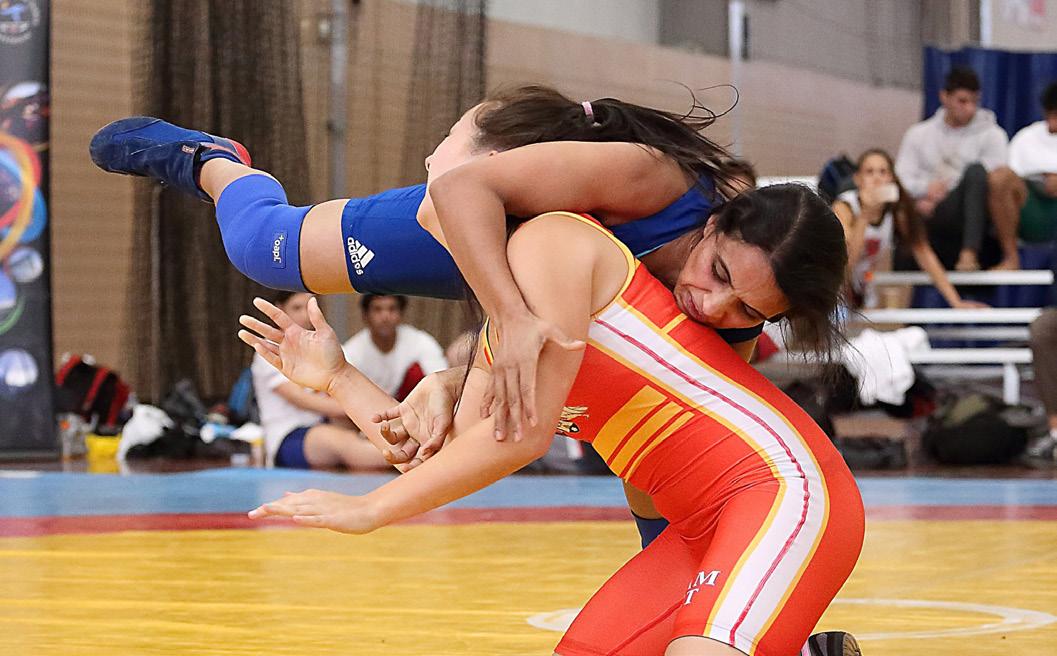
Rupinder follows fellow-Melbournian Sandeep Kumar, another Indian-origin wrestler, who represented Australia at the Beijing Olympics. Vinod Kumar, another Indian-origin wrestler was dropped from the Rio Olympics team after a failed drug test.
Days before Glasgow, we had asked Rupinder if she knew the words to the Aussie national anthem. You know, just in case.
“Bilkul aata hai jee,” she had come back then. This time round, she informs us that she’s been singing it frequently, together with her team mates.
Here’s hoping she gets to sing it a few times at Gold Coast.







WithMaryKom,India’sstarboxer

 BY GRAHAK CUNNINGHAM
BY GRAHAK CUNNINGHAM
West Australia is blessed to have a whole week of Harmony Day celebrations in March. Many councils and community groups actively embrace the meaning of living in a multi-cultural society and the diversity it brings.


Because I am involved with the Sri Chinmoy Oneness-Home Peace Run, I have the opportunity to go along with the Peace Torch to a number of Harmony Week events. Organised almost entirely by volunteers, Mirrabooka Harmony Day celebrated its 10th anniversary this year. With school choirs, dragon dancing and politicians, like City of Stirling Mayor Mark Irwin, Labor MLA Janine Freeman and the Minister for Multicultarlism Paul Papalia visiting, along
with many local councillors, it is a great event. Service groups display their material and promote their causes on their stands with activities keeping everyone busy.
City of Gosnells hosted the Harmony Day Colour Run on Sunday, 18th March. Borrowing from Holi, children and their parents were covered with dye as they ran or walked the 5km course all in the name of harmony at the beautiful Centennial Pioneer Park.


Later, we also went to Tomato Lake on the Sunday afternoon to join the Belmont Harmony Day celebrations. Every year, more and more people seem to come. The balloon twisters had a queue a mile long as did the face painters and origami expert. I was busy pressing out badges that the children had made. Mayor Phil Marks invited everyone to hold the peace torch and the musicians and choirs performed world music all afternoon.
Harmony Week is a unique time in Perth. It celebrates all that unites us as
a community, something that in today’s multicultural world needs to be celebrated all year round. If you can, come along to something next year.
For a three-day community event, the numbers are pretty impressive. Thirteen sports including athletics, badminton, basketball, cricket, golf, hockey, kabaddi, netball, tennis, touch footy, soccer, volleyball and AFL. Nearly 3,000 athletes. 170 teams. 300 volunteers.
The number of spectators? Reports range from 100,000 to 130,000. At one communal meal (langar), some 27,000 plates were served.
The Australian Sikh Games were held in Sydney on the Easter long weekend. An annual Easter tradition, the Games have been bringing Australia’s Sikh community together for a glorious weekend of sport for 31 years now.
The event is organised by the Australian National Sikh Sports and Cultural Council (ANSSACC) and is hosted in a different city every year. What began in Adelaide as a hockey weekend, has today gone on to become a massive sporting event. In recent years, it has attracted participation from overseas, with clubs flying in from NZ, Malaysia, Singapore, Canada, UK and India.
The logistics in terms of organisation are stupendous, especially as it is all
catered for by volunteers. There are team registrations to be organised; sporting fixtures to be arranged; sport officials, security and medical personnel to be organised; travel and food arrangements to be made. It is an enormous undertaking.
Yet the Sikh Games have now become more than sport – they are also cultural events. Besides the opening gala, this time round there were cultural shows alongside the sporting events at Western Sydney, a mega cultural night at Kings School North Parramatta, a Sikh Forum at Rydges Hotel Bass Hill, an exhibition of Sikh portraiture by South Australian artist Daniel Connell, an exhibition of Punjabi sath depicting traditional musical instruments and farming and kitchen implements, and a kirtan tour of Sydney gurudwaras.
Preparations for the Sydney Games began two years in advance, Jasbir Singh Randhawa, Secretary of the ANSSACC tells Indian Link. “These were the biggest Games ever, and it was satisfying to see a cross section of the entire community pitch in. The gurudwaras, the sports clubs, corporates as well as individuals, all cooperated to pull off a successful event.”
Help came from other sources too such as local government, and Punjab university alumni organisations. “Nearly half a million dollars was raised from within the community,” Randhawa reveals.
The Bathla Group, a Western Sydneybased construction company, was a major sponsor this year, taking responsibility for

all the food over the three days in what, reports say, turned out to be a $150,000 affair.
The benefits of the entire exercise are manifold, points out Dr Pavitar Sunner, who coordinated the volunteers at this year’s event. First up, there is the sport of course, but it puts community kids back in touch with their culture, especially as they get to see - and participate in - traditional sports such as kabaddi.
“There are benefits for the mainstream as well,” says Sunner. “A study conducted on last year’s event at Adelaide showed that it added $6 million to the local economy.”
It is not surprising then to hear that the Mayor of Melbourne, next year’s host city, attended this year to get a feel of what it was all about. The social spinoffs as the community gathers from across the country, cannot be discounted either.
What is the stand-out memory from the Games this year?
“As a physician, to see a player suffer a cardiac arrest, and to see that two of his team mates, also doctors, take care of him before the ambulance arrived,” Sunner recounts. “But really, my take-home from this year is the spirit in which the Games were held: the community, the free langar, and how smoothly it all ran, despite the warm weather.”
“For me, the satisfaction comes from the fact that after two years of hard work, the participants and spectators went home happy,” Randhawa says. “The Games are really a mini Olympics, and it is amazing that we can pull them off. Nowhere else does the Sikh community have an event as wide ranging as this. In the UK, in the US and in Canada, community numbers are much larger, and it is only now they are beginning to show an interest.”
Perhaps an international Sikh Games is not far off, with Australia leading the way.

The kabaddi event from the Australian Sikh Games is always a crowd favourite. This time round though, it made the news for all the wrong reasons. The final of the kabaddi competition – to be played between Singh Sabha Sports Club Melbourne and Baba Deep Singh Club Woolgoolga – had to be scratched.

The crowds, waiting for two hours in the heat of the day, grew unruly and hurled plastic bottles on to the field. As the police were called in, it was revealed that some of the kabaddi players had refused to provide urine samples for the random drug tests. Calls have gone out for the organisers to reveal the names of the players, with speculation abounding about the Indian ‘imports’ (kabaddi is the only event in which teams are allowed to bring in players from outside the country). Yet ANSSACC Secretary Jasbir Singh Randhawa would not reveal anything to Indian Link, other than to reiterate strongly that the Games have a zero-tolerance policy on performance-enhancing drugs.
Vice President Mohinder Singh Bitta has sent out a similar message via the Punjabi media here in Australia and in India.
Drug tests were introduced two years ago for select sports hockey, soccer and kabaddi. The doping controversy has put a shadow on an otherwise impeccable event this year. As the Sikh Games increase in stature, organisers will need to ensure stringent measures are in place to avoid recurrence.
Nearly half a million dollars was raised from within the community, reveals Jasbir Singh Randhawa, Secretary of the ANSSACC
 BY SAHIBNOOR SINGH
BY SAHIBNOOR SINGH
Emotions ran high over the three days of the 31st Sikh Australian Games this year as teams competed for the big win. But for the players, it wasn’t just the feelings of winning or losing the Games, it was also a feeling warmth and joy as the community from all over the country came together for one spectacular event that showcased Sikh pride in all its glory.
We spoke to six medal winners –Tarneet Kaur (Women’s Basketball), Simranpreet Singh (Men’s Basketball), Nitin Verma and Sachin Nayyar (Tennis Doubles), Sujneet Johal (Under 19’s 1500m Race) and Harmandeep Singh (Touch Football) – to get their perspective on what is now a landmark sporting event in the community.
Was this your first time participating?
Tarneet: I’ve been participating for the last four years and have always played netball, but this year, I played basketball as well.
Simranpreet: This was my seventh time taking part, and I’ve always played basketball. For the last five years, though, I’ve been playing soccer too.

Nitin and Sachin: Yes!
Sujneet: No, I’ve participated once earlier and loved it. It’s just because it’s such a good community gathering and it makes sense for me to also be involved in sports. It gives me purpose for all the three days, you know? This was my second time, the last time was when it was held in Sydney six years ago.
Harman: Actually, I was a part of the Games when they were held in Sydney in 2012. All in all, it’ll be four times now. What was your favourite part of the experience?
Tarneet: I loved seeing the huge crowds and the spirit of service. The langar was phenomenal. And it was so great to see that people were watching the events regardless of whether their children were participating or not. I think it was also really well-organised this year.
Simranpreet: It’s always nice when you can have a large Indian community coming together, and you can see everyone having fun like a big family.
Sachin: I loved that there was a cultural
touch. On one side, you could see the competitive games being played, and on the other, young kids performing to traditional Punjabi songs with bhangra and gidda. It’s wonderful how our community can do something like this on such a grand scale.
Nitin: I was amazed at the fact that there were no hiccups, everything was properly planned, like the transport facilities. The buses were a real comfort to people travelling between the venues. Also, some of the games don’t have international/ national recognition like kabaddi, but at an event like this, you get to see the regional Punjabi games at a professional level. Seeing all the communities come together to represent Punjab at such a level, it’s like a mini Olympics!
Sujneet: I think it’s just amazing to see that, despite everyone being so busy in their lives and having their own issues to deal with, we can take out the time and make an effort to come together and celebrate being ourselves and being Sikh. And what bonds us more than playing together? The games, langar, folk dances – it was fantastic to see such a grand celebration of just being us and celebrating our identity.
Harmandeep: I’d say my favourite bit was the atmosphere. What I really like about the Games is that it brings a lot of people together, from all over Australia. I have family across the country so this was a great opportunity to meet them again. At our house, we had cousins from Melbourne staying over and we’d stay up chatting the whole time which you can’t usually do because they’re in a completely different city. You get to catch up with old friends and meet new people.
Describe to us your most memorable win or match
Tarneet: Winning a match is can cause such a weird mix of emotions! There’s an adrenaline rush from playing, anxiety and fear of things going wrong. It was a very close game so it was hard to tell whether we would win or lose, so we were very nervous. But mostly it’s all a blur. All you do is focus on your own game and work together as a team to get it done. My girls played extremely well, and in the end, it was pure luck that we won, but it was phenomenal. I mean, I cried after the winning match because I couldn’t believe the result. It felt great because my parents were proud, and the trophy is pretty good as well (laughs).
Simranpreet: Our basketball team won against New Zealand in the finals and it was… intense. They have defeated us before in other events, and even in the Games leading up to the finals in this tournament, so we were incredibly nervous. But we told ourselves that we would give it our best shot and work as a team and most importantly, just play the game. It was a relief when the final buzzer went off and we realised we’d won (laughs). It was a long game.

Sachin: To tell you the truth, the game was hard. We did struggle because of the intense heat. But we definitely enjoyed the match.
Nitin: Yes, the final was awesome. We actually lost the first set which made us nervous since it’s a game of three sets (best of three). Obviously, losing the first set put a lot of pressure on us and we had to rethink our strategies. But it was a great feeling. I feel like I’ve gotten a lifetime achievement award.
Sujneet: I think the first thing was “how can I breathe again”. I wanted to participate in other running and athletics events but I missed them, and that was the only event left. So, I did it! But I guess the winning moment… I just remember trying to catch my breath and then hugging the girl who came first in the under 17s division. It felt great, but more than that, it felt amazing to see my parents’ faces. They were screaming hoarse! Knowing that I made them proud just made me unbelievably happy. Harmandeep: We versed Woolgoolga and we won 5-3, and earlier in the day we had
lost to them 4-3, so it was great to get on top, especially in the final, where it really mattered. It was a pretty close game, and fast paced as Touch Footy usually is, so it was quite exhilarating. It was also stressful during the actual game because we were constantly wondering about how much time had surpassed, so when it finally finished, we heaved a massive, massive sigh of relief. The excitement came later when it actually sunk in that we won Touch Footy competition for the very first time.
How does it feel now that the Games have come to an end?
Tarneet: A bit sad, to be honest. Every year it’s the one thing I look forward to because it brings us all together. People come together and eat and play together, and you get to meet friends you don’t have time to meet otherwise. But I was also relieved because you spend a couple of months training before the event. And of course, I was ecstatic about the win!
Simranpreet: At the end of it all, I was absolutely drained, both physically and emotionally. But it was so much fun! You don’t think too much about it in the months leading up to the Games because time flies in training and competing, but when it all gets over, it feels rather strange. So yeah, glad it was over because I can rest now, but it was worth it.
Sachin: I think we were very happy, and not just because we won, but because we were part of this mammoth event! We’ve loved seeing the solidarity among people. It was not just a sport to us, it was a beautiful experience.
Nitin: Yes, altogether we had a great experience. The opportunity to play against various people across various parts of Australia, that was pretty good.


Sujneet: I know you’ll think it odd, but it was quite a warm feeling. It’s a combination of things: playing a team sport alongside other Punjabi girls, making great friendships, and the selfsatisfaction of individual sport. Plus, the dancing and singing…it just left me feeling really good inside.
Harmandeep: I was a bit, I don’t know… I wish they weren’t over because we had such a good time. Maybe ‘disappointed’ isn’t the right word, but definitely felt a bit down. I don’t know how to describe it. Pick your best memory from the Games this year.
Tarneet: For me, it would have to be the moment before the Games when you put your hands in with your teammates, that’s my stand out memory of the Games… (pauses), and the jalebis from the langar.
Simranpreet: I think the most memorable moment for me is after the three long games on a Friday, when I finally managed to go to the chiros and got a really nice leg massage. The chiros were free for players and assisted them in recovery, and I’m pretty sure each
player who went to the chiro definitely benefitted.
Sachin: I saw a lot of kids at the Games doing sewa, and the enthusiasm with which they were distributing the bananas and water bottles to everyone… it was a very proud moment for me to see the kids welcoming everyone with open arms. Nitin: I was amazed by the way they arranged the food – breakfast, lunch, and dinner. And despite the humongous crowd, they served it so good-naturedly. It was truly astonishing to see.
Sujneet: I think the thing that touched me the most was the opening ceremony where the kids started off, and then there was such a classic, old school Punjabi folk dance. It was so traditional and nostalgic, I honestly teared up when I saw it all happening. It felt like we went back in time and were in the old, original Punjab. I don’t think I’ll forget that feeling for quite some time.
Harmandeep: My favourite memory has to be the bhangra in the opening ceremony performance. I thought it was fantastic to start the event on such an energetic note, you know? It was so colourful and fun to watch, especially for the audience, and there were some 175 kids performing, that was really great to see.
It was so traditional and nostalgic, I honestly teared up when I saw it all happeningSujneet Johal 1500m Men;s Touch Footy team Doubles Tennis: Sachin Nayyar and Nitin Verma
Over the past year, Australia received 8.7 million international visitors, the majority coming from China, New Zealand, the USA, UK, Japan, Singapore, Malaysia, South Korea and 277,100 from India.
But while international travellers generally visited to see Australia, only 35% of Indian visitors came here to travel, with 53% coming to see friends and family, while business, education and employment were given as other reasons. For those who visited to see friends and family, outings were generally day tours organised by their hosts, rather than venturing off to explore Australia independently or joining an organised tour.
As a tour guide based in Sydney, I get to meet many international travellers, mainly from the USA and UK, who prefer to join organised tours. During the short time I have with them, they tell me about their initial impressions of Australia.


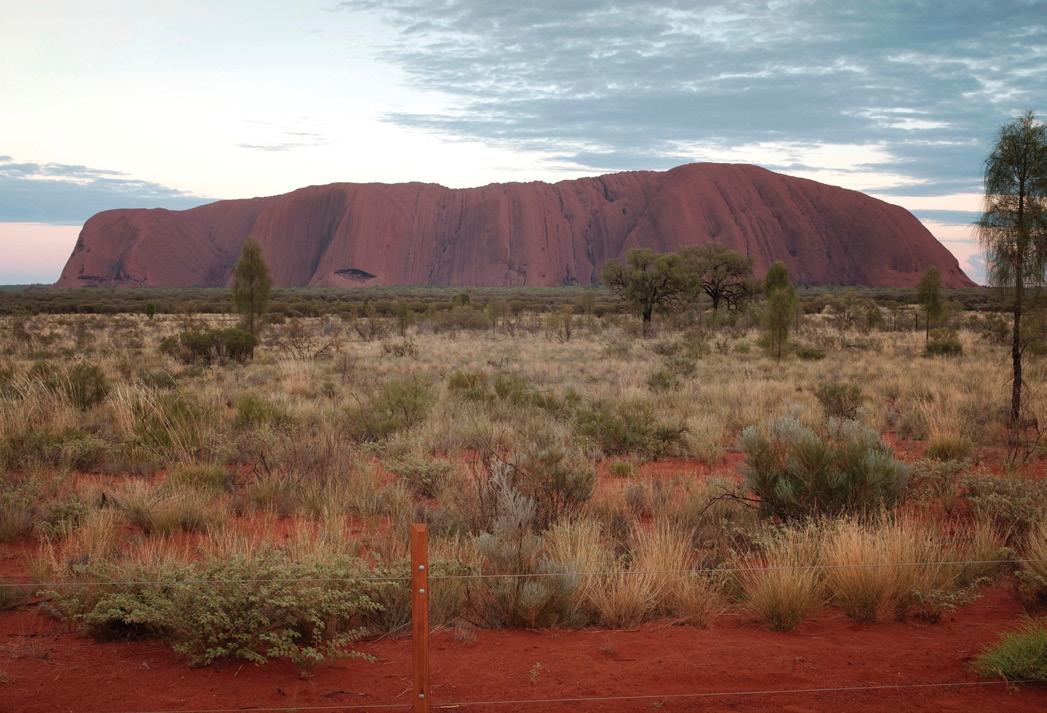
Why do they choose to come here?
Surprisingly, they know little about Australia. They know that Nicole Kidman and Chris Hemsworth are Australian though many have an image that Australians are like the characters portrayed in the movie Crocodile Dundee from the outback ready to wrestle snakes and crocodiles. They think we are friendly and welcoming people and consider that it will be easy to travel around because we are English-speaking and live a comparable
lifestyle. Many say it was on their bucket list and that it’s unlikely they will be back as the distance is too great.
What are they expecting to see?
They show far more interest in the culture and heritage of Australian Aboriginals than in the voyages of discovery and subsequent European settlement from 1788. They want to see the Sydney Opera House, and engage with our wildlife - especially koalas and kangaroos - experience the outback, beaches and the Great Barrier Reef. Few are aware of the enormity of Australia, the size of our coastal cities or the sparseness of the interior that few get to see.
What do they like the most?
Aboriginal dreamtime stories, interacting with our native animals, the Sydney Opera House, and our beaches.
What observations do they make?
> Our cities are much larger than expected and very impressive.
> Sydney has too much infrastructure work in progress and too many red lights that create traffic congestion.
> We have a lot of cyclists.
> People dress much more casually, few wear suits or dress up even for the opera.
> Our architecture is unique with broad wraparound verandahs and Victorian era houses with the addition of wrought iron balconies. Cities are clean, lush and green; our native plants, birds and animals are interesting.
> There is a surprisingly high presence of international brands such as Starbucks, Aldi, McDonalds and KFC.
> People are self-reliant and this is a common cause for complaint as it relates to service. You have no choice but to do everything yourself - there are no porters to

Here’s what visitors love about Australia - or don’t - and what they must see and do
handle your luggage.
> Everything - but especially food - is very expensive and food portions are smaller.
> They are not aware that Australia is such a diverse multicultural country.
> They are interested in facts and figures that relate to real estate prices, the average wage, education system and cost of living especially petrol prices.
They arrive unprepared for our climate - they don’t wear a hat or sunscreen and they don’t drink water. They ignore the flags designating patrolled sections on beaches. They don’t sample our incredible wine and fresh produce and they don’t try our robust coffee. They underestimate the time needed to see Australia and they don’t stay long enough.

If I had to narrow down the absolute must-sees of Australia, the places that allow you to feel a sense of connection to our land, I would recommend the following:



> Our beaches are the most stunning and pristine in the world. From the rugged coastline along the Great Ocean Road, to Ningaloo and the Great Barrier Reef, Lord Howe and Kangaroo Island. For that quintessential beach experience that represents our relaxed lifestyle, head for Noosa, Manly or Cottesloe.
> To experience the outback, I’d choose
the Ghan - love it! I’ve travelled on it 3 times. Also, the West MacDonnell Ranges near Alice Springs, Uluru, the Flinders Ranges and the Kimberley are all spectacular.


> For cities, my favourites are Melbourne for the gardens, quirky laneways and astonishingly good dining, Sydney for the world’s most stunning harbour and Adelaide, a low-key beautifully preserved historic city.
> To experience the best and freshest produce, head for the Adelaide Central Market in Adelaide and Queen Victoria Market in Melbourne. Visit the wineries of the Yarra Valley, Mornington Peninsula, Hunter Valley, Margaret River, Barossa, Clare Valley and McLaren Vale.
> For the best walks, there are so many from the Red Centre’s Larapinta walk to the Bay of Fires in Tasmania. And for typical Australian food, sample vegemite, pavlova, lamingtons and something from the barbie. So when your friends and family next come to see you, you can start by saying what my friends at the Waradah Aboriginal Centre say to visitors - welcome to our country. And then show them around.
Clockwise
(Visitors) show far more interest in the culture and heritage of Australian Aboriginals than in the voyages of discovery and subsequent European settlement from 1788
By replacing and upgrading parts of the existing phone and internet network, nbn is bringing more Australians access to fast and reliable broadband services.*



Most homes and businesses need
As most existing landline phone and internet services will be disconnected, it’s important you switch a ected services before your disconnection date.^ nbn will notify you by mail once you can switch to a new plan over the nbn™ access network. You’ll then have up to 18 months before existing services are disconnected.^



nbn











This means nbn does not sell to the public. nbn supplies phone and internet providers with wholesale services they combine with their own
network services to deliver your new plan. So you’ll need to contact your preferred provider once you’re ready to switch.
Factors a ecting your experience



The nbn™ access network and your provider’s network are likely to slow down when more people are online at once (particularly during typical busy periods, like evenings). Maximum speeds will also vary based on your modem, Wi-Fi and other issues.* For more information on how your particular experience will be a ected, speak to your provider.

Safety-critical devices like medical alarms, fi re alarms, monitored security alarms and lift emergency phones, may not be compatible with your new plan at all times.† To help minimise a loss in your services, check with your device provider that these will work on your new plan or whether you’ll need to fi nd an alternative solution. It’s also important you register safety-critical devices with nbn by calling 1800 227 300 or visiting nbn.com.au/compatibility.


*Your experience, including the speeds actually achieved over the nbn™ broadband access network, depends on the technology over which services are delivered to your premises and some factors outside our control (like your equipment quality, software, signal quality, broadband plan and how your service provider designs its network). nbn is a provider of wholesale speeds to internet providers. nbn™ wholesale speed tiers available to your phone and internet provider vary depending on the access technology in your area. ^ Services o ered to phone and internet providers over the nbn™ broadband access network will be replacing phone and internet services provided over most of the existing landline networks, including copper and the majority of HFC networks within the fixed line footprint. Services provided over existing fibre networks (including in-building, health and education networks) and some special and business services may not be a ected. To find out if your services will be a ected, please contact your current phone or internet provider. For more information, visit nbn.com.au/ switcho or call 1800 687 626.† The rollout of the nbn™ broadband access network will involve new technologies, and some existing devices (including many medical alarms, autodiallers and emergency call buttons) may not be compatible with these at all times. You should contact your device provider to find out if your alarm or other device will work when connected to the nbn™ broadband access network and what alternative solutions are available. For more information, visit nbn.com.au/compatibility.
© 2018 nbn co ltd. ‘nbn’, ‘bring it on’, ‘Sky Muster’, ‘gen nbn’ and the Aurora device are trade marks of nbn co ltd | ABN 86 136 533 741.







Even if you couldn’t volunteer for World’s Greatest Shave between March 14-18 when the initiative was underway, don’t sweat it. You can do it any other time of the year, just like 27-year-old Smit Shah, who plans to sit in the hairdresser’s chair in May this year. Smit, a Senior Analyst at Deloitte in Perth, says the event seemed like a really fun way to do more charity work. If you’d like to donate to Smit’s cause, click http://my.leukaemiafoundation. org.au/smitshah
If you too want to donate on another date, all you have to do is call the Leukaemia Foundation on 1800 500 088 to discuss a time that suits you.

It was a cut with a cause. Sydney couple Parul and Varun Batra on 14 March took part in the World’s Greatest Shave (WGS) initiative to raise money for cancer research.

Having taken the brave decision to shave their heads, the couple has raised over $4,000, but is keen on raising at least $6,000 for the cause.
As you might know, volunteers get sponsored and the money they collect goes towards research for finding better treatments for leukaemias, lymphomas, myeloma and other related blood disorders. In Australia, a staggering 60,000 people are diagnosed with blood cancer and related disorders, the third most common cause of cancer death.
Varun tells Indian Link that his wife is the reason they finally took the plunge this year. “Parul has wanted to do this for sometime now, so this year we decided to go for it together. We thought the collective focus would increase support for the cause,” he says.
Going bald, especially for an Indian woman, is a big step. For most women, hair is more than just a part of their looks, it’s a part of their identity. Did Parul feel that she would lose a part of her identity or change her persona in a significant way?
“The only change,” Parul replied, “is that we feel a lot colder!” She added, “Did it feel strange? Of course. But to be honest, excitement was the over-riding sensation!”
The money they have managed to raise has boosted their confidence. “This has definitely motivated us to do more to
make a difference. But the movement needs far more support. Parul and I are certainly going to try and find more ways to contribute to this event, not just in cash but in kind too,” Varun says.
Did they face any resistance or backlash from family? “Our families were a bit stunned at first, sure. But they came around, and when we told them why Parul and I were participating in this event, they were immensely proud of us,” Varun said. “Of course, Parul and I supported each other right from the beginning.”
In the past, Indian Link has reported on how two Sydney-based women, Deepa Hariharan and Vani Chandra, stepped up to the challenge and shaved their heads as part of WGS. While Deepa decided


support the cause by raising $3,000 after a dear friend lost her life to brain cancer, Vani raised more than $5,000 for the Leukaemia Foundation by shaving her locks on her birthday.
This year marks 20 years since World’s Greatest Shave was started by the foundation in 1998.
What’s more, the foundation recycles ponytails into wigs and turns hair clippings into compost or floating booms to absorb oil spills at sea. Not only do you end up helping improve the life of a cancer patient, but also the environment. It’s a win-win all the way.
Check out https://worldsgreatestshave.com/ to know more.
How the money helps Volunteers earn badges depending on how much money they can raise.
Here’s what the badges mean:
Helping Hands Badge $250.
Enough to enable a family to attend a support program specific to their blood cancer.
Sleep Easy Badge $560. Enough to give a regional family a free place to stay close to treatment in the city for one week.
Beep Beep Badge $1200. Enough to provide free transport for people who are too ill to drive after chemotherapy treatment, for two weeks.
Breakthrough Badge $2000.
Enough to aid future breakthroughs by funding a major blood cancer research project, for one week. Discover Badge $4800. Enough to fund 3 months of lab costs for a research project to discover better treatments for blood cancer.
Life Saver Badge $10,000. Enough to provide emotional support to help 300 families overcome the initial shock and stress of being diagnosed.
Admit it. There’s never a bad time for chips. They are some of the best accompaniments for a movie, a game or any party. Most of us love to have a bag of chips when we travel or serve them when guests
Potato chips are a crowd favourite. However, the store-bought ones contain a lot of oil and salt, spices and preservatives. So, the homemade variety is far better. You can actually dehydrate them and fry them in batches whenever you want.

Ingredients
1-2 large potatoes
1 tbsp salt
1 litre water
Oil to deep fry
Red chilli powder or paprika, to taste (optional)
Method
Using a mandolin slicer, thinly slice potatoes.
Drop in boiling salted water for three to five minutes.
Remove from water and spread evenly in a dehydrator tray. Alternatively, you can dry them in sunlight.
arrive. But having the regular store-bought variety regularly is both unhealthy - think oil, copious amounts of salt, chemical flavourings, colouring and preservativesand unaffordable.
What most of us don’t realise is that
Baked sweet potato chips are a low calorie snack and much healthier than the fried version. They taste great even without salt. You can also make baked potato chips in a similar fashion. Just remember that the oven temperature should not increase beyond 160 degree Celsius. Otherwise, you will be left will horribly burnt chips.

Ingredients
1 large sweet potato (around 300 grams)
1 tbsp olive oil
Method
Using a mandolin slicer or a sharp knife, slice the sweet potato lengthwise. Toss the chips in olive oil. Spread them evenly on a baking tray, making sure they don’t touch each other. Bake for 15 minutes at 160 degrees Celsius in a fan-forced oven. Flip the chips and bake again for 10-15 mins.
Once done, take out of the oven let rest in the baking tray for 5-10 mins. If you want to store them, let cool completely before putting them in a dry, air-tight jar.
chips can be made easily at home with some prior preparation. Because you are in charge, you can control the amount of oil and salt in them. Here are three types of chips, made using three cooking techniques – baked,
Dehydrate for 4-7 hours until completely dry and crisp. Store in a dry air-tight jar.
To eat, deep fry in hot oil until light golden brown.
Season immediately with chilli powder or paprika, if using.

Apple is a versatile fruit. You can eat it raw, juice, bake or cook it and, in this case, even dehydrate it. If you have a picky kid who just wants to eat munchies, apple chips are what you need. You are happy that they are eating healthy and so are they as they get to eat chips. You can use a dehydrator to dry these chips or alternatively just sun-dry them. A dehydrator is great in places where you don’t get adequate sun or in winters when you want to dry chips or crisps outdoors.
Ingredients
1-2 large apples
1 tbsp lemon juice
Method
Using a mandolin slicer or a sharp knife, slice the apple in thin chips. Toss them in lemon juice. Spread them evenly in a dehydrator tray.
Dehydrate for 4-7 hours or until crisp. Store in a dry, air-tight jar.
 BY RAKA SARKHEL LAHA
BY RAKA SARKHEL LAHA
 Introduction by Craig Jeffrey. Oxford University Press, 2017
Introduction by Craig Jeffrey. Oxford University Press, 2017
Apart of Oxford’s Very Short Introductions series, Craig Jeffrey’s Modern India is a short and serious account of present-day India. Jeffrey, who is director and CEO of the Australia India Institute, takes keen interest in India - focusing his research on youth, education and everyday politics in India, and has six books related to these themes under his belt.
This book, Modern India: A Very Short Introduction, begins and ends on a hopeful note - the first chapter called Hope narrates an incident of a traffic hold-up by a group of school children in Uttarakhand, demanding a better maths teacher at their school. “Sitting in a circle on the bridge with their arms locked together they chanted their main demand and sang popular Garhwali songs,” he says. Three weeks later, a new Maths teacher arrived at the school.
The last chapter, titled Youth, also reiterates hope for India’s future, propped on the shoulders of her large young adult population. “One in ten people in the world are an Indian youth aged under 30,” the author notes. All the country needs to do, in order to be able to dream through its youth, is give them a robust institutional and infrastructural environment in the form of strong educational and healthcare systems, and
better employment opportunities.
However, primary education in schools is in a dire state, with “25 per cent of teachers absent from classes during spot checks across India… The Indian state has failed to raise spending on education, which remains roughly at 3%, well below the expenditure in many Western countries.” Higher education remains equally dodgy. Vocational learning suffers while rote learning with the myopic goal of clearing examinations still gets prime importance.
Further, the lack of employment and basic infrastructure continues to exacerbate poverty and social inequities, much like at the time of British imperialism.
Jeffrey also offers a brief account of
FESTIVAL
Vaisakhi Mela
Sun 15 April (12:30pm - 9.00pm)
Hertha Reserve Stirling, 21 Cedric Street, Stirling (Opposite Stirling Train Station). Details 0424 959 494
ENTERTAINMENT
Panchamda Tribute
Sat 14 April ‘An Eternal Passion’: A tribute to Panchamda. Details Sundeep 0431 527 606
Stand-Up Comedy
Sun 15 April Zakir Khan (5.00pm onwards) Churchlands Concert Hall, 20 Lucca Street, Churchlands Details Keyur 0412 660 331
Indian music at Fairbridge
Sat 21 April (6.30pm onwards)
IndianEye’s NSG Sishyakulam performs at the Festival of Inspired Music Fairbridge. Details Yaso 0419 951 378
Classical vocal Sun 22 April (4.00pm onwards)
IndianEye presents an Indian classical vocal concert by Sri Neyveli
the colonial period and how the East India Company filled Britain’s coffers by impoverishing India, and the nationalist movement that drove them out. The need for a new identity for a newly independent nation and the debatable notion of caste is also succinctly handled.
Hope again resurfaces in the chapter, Making India Work, with Jawaharlal Nehru’s speech on the eve of Independence on 14 August 1947 - “A new hope comes into being, a vision long cherished materialises.”
Post-independence, reimagining and rethinking India was the main agenda for those at the helm. Jeffrey notes three major changes between 1989 and 1992. The first one relates to that of caste, where leaders from backward groups and classes became more active in politics. At the same time, another major change took shape in the form of Hindu nationalism with the formation of the Bharatiya Janata Party (BJP) in 1977. The third major
shift in the early 1990s was economic reforms that paved the way for substantial liberalisation through private sector participation, increased foreign direct investment and freeing capitalists from unhelpful bureaucracy and regulations. While the reforms reduced poverty, they deepened urban-rural and gender divides and aided religion and caste-based inequalities.
However, hope survived.
And strengthened itself through social revolutions that made a place in people’s conscience through the reach of technology and education, and the notions of citizenship and civil society. These have also played a big part in encouraging aspirations and cultural expression.
Apart from hope, Jeffrey also points out the country’s inherent conflicts and contradictions in its social and cultural fabric. It is perhaps difficult to qualify India under one single epithet, given her many contradictions. The wonder, however, is in the fact that she continues to thrive in her contradictions.

COMPILED BY PUNEET ANAND
Santhanagopalan. Venue: Chapel, All Saints College, Ewing Ave, Bull Creek, WA. Details Yaso 0419 951 378
SPIRITUAL
Kriya Yoga
Fri 20 April Australian Kriya Yoga Association presents a public talk by Paramahamsa Prajnanananda. Details www.kriya.org.au
19-21 April Sundarkaand Paath by HH Shree Ashwin Kumar Pathakji. Congregations at Spearwood, Bentley
and Dianella. Details Kalpesh Vyasa 0401 103 565
SPORT
Kabaddi
Sun 6 May Perth Kabaddi Club presents Perth Kabaddi Cup. Details 0497 411 111
To have your event listed here, email media@indianlink.com.au

What does it take for the English-speaking world to realise that Indian movies are not just about Bollywood? Well, here is a step in the right direction.
Corrie Hinschen, a Brisbane-based Australian movie critic, has decided to look largely beyond the song-and-dance films from India and explore parallel cinema and regional cinema, especially from South India.
Masala Bollywood films captured the attention of the Western world long ago. The best outcome of this was that the films changed the perception that India was a country of elephants and snake charmers. Having said that, there is no denying that regional cinemas in India have a huge following of their own, particularly because of the quality of these movies. However, outside India, they have not had the same kind of reach that mainstream Hindi movies enjoy.
This is where Corrie comes in. He is a YouTuber, who reviews Asian movies

from South Korea, Japan, China, Hong Kong, Indonesia, Taiwan and India. He broadcasts the reviews on his channel, Pieces of Work, which has around 35,000 subscribers. South Korean films, he says, are his bread and butter. “However, I adore Indian films as well,” he says.
Of the 51 videos on Indian movies Corrie has made so far, 29 are Hindi film reviews (very few of these are the mainstream type), nine are on Malayalam films, three on Tamil, four on Telugu and two on Kannada films. “It is the necessity of regional cinema to compete with the multimillion dollar industry called Bollywood,” Corrie says. “This requires them to make these extraordinarily good movies.” The best part is that Corrie reviews these movies in English, which introduces them to an English-speaking audience as well.
Living in Australia, and not speaking any of the Indian languages, how does he decide which movie he should review?
“My keen audience plays a part here. I take suggestions, and sometimes even run polls to determine which movie I should watch next,” Corrie explains.
Asked to pick his favourite movie from all the Indian movies he has reviewed so far, his choice is Mumbai Police, a thriller in Malayalam. Quite familiar with the actors and actresses from these movies, he
picks Prithviraj, a Malayalam actor, as his favourite. On a lighter note, it takes Corrie a lot to even try and pronounce his name; but he has no trouble endorsing his acting. But his reviews aren’t just full of high praise. “I do have very strong opinions about what happens in India in reference to the movies that are made there,” he says. Corrie’s recent review on Padmaavat is a great example. He does not shy away from stating that the movie lacks soul, and as he does it, touches upon some pertinent social issues. It is interesting that someone who has never been to India, and hasn’t had first-hand experience of its culture, has formed an idea about the country’s way of life and society just by watching many of our movies. And that includes some grim realisations as well.
Yet another relevant issue that he addressed recently was the plagiarism in Indian movies. In his video titled India, We Need To Talk About Plagiarism, he rips apart some plagiarised Indian movies. “This inadvisable trend of plagiarisingeuphemistically referred to as ‘inspired by’ - will undermine the value of the great movies that are made in India. I will continue reproaching this trend unless it is discontinued,” he says in the video.
Corrie may well be the only Australian who reviews South Indian movies in English, and these reviews have been viewed between 10,000 and 56,000 times.
For good regional films, this could serve as a launch pad to the English-speaking audience in Australia, and thanks to the power of the internet, to the wider world.
The inadvisable trend of plagiarising will undermine the value of the great movies that are made in India
Corrie Hinschen, movie critic
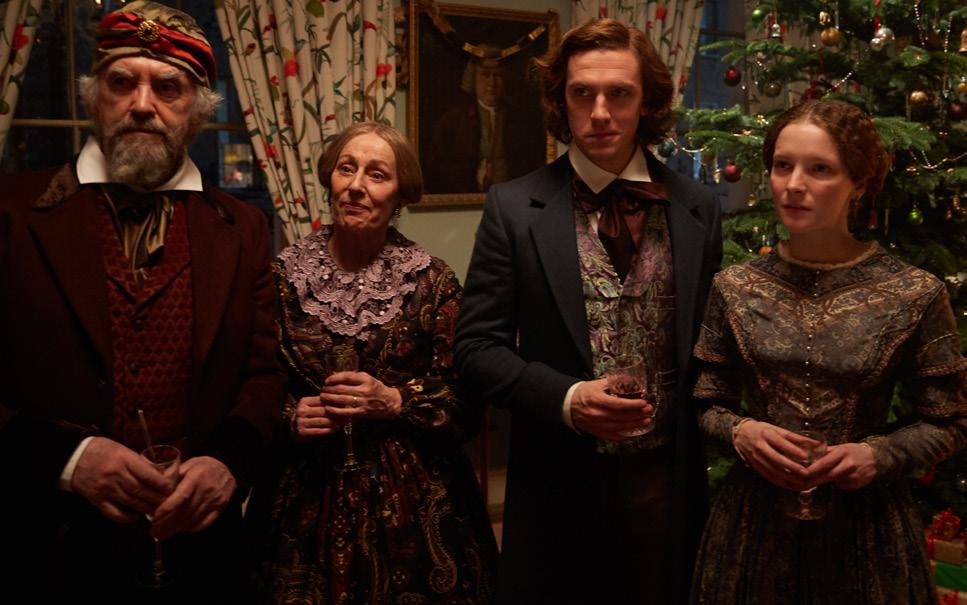
 BY JYOTI UTTAM
BY JYOTI UTTAM
Only a handful of Indian or Indian-origin directors have made it big on the English language movie scene. They include Mira Nair, Gurinder Chadha, Shekhar Kapur and M ‘Night’ Shyamalan. To add to this short list is a name not many would have heard of, but Bharat Nalluri is slowly but surely making a mark in the film industry with an eclectic repertoire of films and TV shows - Miss Pettigrew Lives for a Day, Tsunami: The Aftermath, Life on Mars, MI-5 and Emily Owens M.D., among others.
Nalluri’s latest movie is The Man Who Invented Christmas, slated for online release on 28 March. It is the story of how the author Charles Dickens came about creating and self-publishing his iconic novella, A Christmas Carol. The movie is based on a critical part of the life of Dickens when he is 31, a literary rockstar on a downward trend. Three of his books had failed in a row, debt was looming and his wife was pregnant with their fifth child. To make matters worse, he had hit writer’s block. Bringing out a successful book was crucial for him. He had an idea for a new book about a miserly man who is redeemed after meeting the ghosts of Christmas Past, Present and Yet To Come.
The lavishly illustrated volume turned out to be more than just an instant moneymaker. The spirit of Christmas, as we know today - charity, gifts, parties, the
tree and its secular tone - was non-existent until the book came out. Christmas had degenerated into a drunken festival. The slim, 70-page book, which went into seven reprints in six months, revived the meaning of Christmas as a time for reflection and began a host of customs that are popular even today.
In The Man Who Invented Christmas, Nalluri hasn’t portrayed Dickens as the bearded serious-looking elderly man we usually see in photos. He is a dashing young man in his thirties, captured from his portraits of that time. Important scenes from the book are recreated in the movie and deftly interwoven into Dickens’ own life story and his creative journey.
Nalluri, who was in Sydney in December last year to promote the film, spoke to Indian Link about his cinematic journey.
Having moved to the UK from Andhra Pradesh at the age of five, Nalluri grew up watching Bollywood movies. “Sunday viewings were Sholay, Amar Akbar Anthony, Pakeezah and such classics accompanied with mum’s dosas. The films were in Hindi which I did not understand, but I loved the songs and drama. They have, without a doubt, influenced me,” he said. One can certainly see that in The Man Who Invented Christmas. Though there is a dramatic way of conveying the emotions of Charles Dickens that seem larger than life, these are conveyed without being over the top.
Asked if he would be interested in taking up a film project based in or on India, Nalluri said he would love to but “I want to find something that has some connective tissue to my experience so that I’m not pretending to be something I am not. I want to make sure I’m not just
skimming the surface of the subject.”
A project in the pipeline is Tip Top Taj Mahal about Indian immigrants coming to New Zealand in the 1980s, a subject close to his own immigration experience.

The director also praised the huge renaissance in Indian cinema. “The new directors are amazing. Lunch Box is such a beautiful film. Nawazuddin Siddiqui, Manoj Bajpai and Irrfan Khan are some of my favourite actors. Such trained, controlled and powerful film-makers and actors!” he said admiringly. He himself started the journey with his father’s Super 8 camera, making small films with his friends. “I won some awards, went on to make bigger films, set up a company and it all somehow happened,” he said, recollecting how his career evolved. “Film making is lightening in a bottle. It is stunning whenever you get it right. So many people are involved from the beginning to the end, right up to making the poster. Every one of them has to get it right,” he said, sounding relieved that his movie turned out well and has been well received the world over.
Bharat credited the film’s success to the “copper-bottomed” script by Susan Coyne and the wonderful crew and actors. Handsome Dan Stevens of Downton Abbey fame plays the young Dickens well,
capturing both the humour and energy of the personality. Christopher Plummer playing Ebenezer Scrooge is fantastic as usual.
You won’t have to read The Christmas Carol again to enjoy the movie, but Nalluri has certainly become a Dickens fan from the experience. “He is brilliant at telling a wonderful, exciting adventure story. He gives you all this fun but underneath there is something to think about,” said Nalluri, referring to the way Dickens brings out social issues of child labour, poverty and inequality in his books. As a director, Nalluri has captured this brilliantly in the movie and woven a fascinating story where Dickens’ real family and imaginary family of characters from his book come in and out of the movie scenes beautifully.
Dickens is one author who has never been out of print and with this movie Bharat has created a lovable movie that will never be out of date. Certainly no ‘Bah, humbug’!
I did not understand (Hindi films), but I loved the songs and drama. They have, without a doubt, influenced me
For a sportsperson, the pain of not being able to play far exceeds that of the injury that causes it. At least, that was the case for UK cyclist Vilas Silverton.

The 50-year-old, who’s in the country for an epic 5,500-km cycling journey from Perth to Sydney along with several other international cyclists, excelled at home in traditional cycling races and was a divisional champ for the last three years. Until one fateful day, when a back injury meant he could no longer perform his favourite sport, cyclocross, a form of extreme cycling in which riders carry their bikes through un-rideable terrain and mud.
So, what prompted Vilas in cycling hundreds of kilometres a day for up to 18 hours a day? “I saw some multi-day runners whilst volunteering at a race and saw the energy emanating from them, and wanted it myself. I’m no runner,
so I decided to cycle longer distances,” he explains.
Moreover, long distance cycling involves easier gears and doesn’t cause as much strain on the back.
The cyclists left Perth midMarch. “I was at the start. The atmosphere was really charged with hundreds of spectators cheering. There are a lot of Indians in the event too (one got knocked off his bike by a kangaroo along the Nullabor Plain!) Originally, they were to take part in the Indian Pacific Wheel Race,” says Vilas.
“Unfortunately, the race was cancelled due to a coronial investigation into the 2017 race after a vehicle collided with a runner. But many cyclists had already booked their tickets and in any case, the race was going to be unassisted. So, people still decided to take part,” he adds.
Rohan migrated to Australia from New Delhi in June 2011. Being in a new country miles from home, he had to accustom himself to the very different culture of his new homeland. Setting up his home was going to be a huge task. Unlike back in Delhi, he didn’t have the electrician or carpenter who were just a call away then. And of course he didn’t have family around. However, he soon found an extended family welcoming him in his new innings – his fellow community members.
From choosing the appropriate home to rent, to identifying the best school for his kids, Rohan leaned on the experience and genuine advice that his friends gave him. Microwave meals

soon gave way to pot-luck dinners with neighbourhood buddies and lazy weekends became frenetic cricket league days. Today, Rohan actively helps new migrants coming to Australia by recommending the best shops, eateries, suburbs, schools, holiday spots, the list goes on.
Businesses too realise how important people like Rohan are in making sure their own positive experience are passed on to fellow community members, and how it is important to encourage such positive influencers.
There are several people like Rohan who use a service recommended by their peer group and then refer it on to others. And it makes it even better when they are rewarded for their suggestions. Brands
Vilas was disappointed about the cancellation too, but only momentarily. “I questioned my reasons for doing it. The whole point of doing it was for selftranscendence and that hadn’t changed, so I thought I’ll do it anyway,” says Vilas, who cycles with the Sri Chinmoy Cycling Team and uses his philosophy of selftranscendence to continually improve himself.
The cyclist adds that there was not a
soul from media or otherwise to watch Aussie cyclist Abdullah Zeinab cross the finish line. But that is not what the event is about. “I guess we all have our own reasons for doing it,” says Vilas. “For me, the spiritual vastness of this country is really special and I will be out there experiencing nature.”
Currently, Vilas is approaching Mount Kozscuisko.
Grahak Cunninghamlike Remit2India recognise how close-knit our community is, and have an active referral program. Refer a friend online or on the App and as referrer you get an assured A$50 for every new friend that joins. A small reward for a good deed. So as our community continues to grow, every new migrant moving to Australia will continue to look up to people like Rohan as the guiding light
that helps them settle in. In years to come, they pay it forward by becoming a Rohan to someone else!




humbug. Every minute counts. And while some of the scenes showing Rani’s flourishing bonding with her students is keenly melodramatic the actress sails above the stagnant pools of water that the plot often encounters.
Rani Mukerji makes her Touretteinformed character unwavering in her upbeat personality, yet she is no giddy-headed breathless optimist. The pain comes gushing out in a sequence where she pounds and pummels her uncontrollable mouth almost as though she were sparring with her destiny.
STARRING: Rani Mukerji, Neeraj Kabi; DIRECTOR: Sidharth P Malhotra
HHH HH

There is a disarming idealism at the heart of this inspirational tale told without frills of fancy. The flights of daring that the protagonist Naina Mathur undertakes never seem irrelevant. On many occasions the plot veers towards a sweeping sentimentality that, given other circumstances, would be considered manipulative.
Not here.
Hichki dives deep into the collective consciousness of a nation inured in prejudices and comes up with some well-served lessons on humanism tolerance and generosity. It may not be India’s To Sir With Love. But by Jove,


Rani Mukerji in what easily ranks as her career’s best performances (yes, better than Black) gives Mr Sidney Pottier a run for his heroic stature.
The plot derives its creative juices from a real-life British teacher who suffered from the Tourette Syndrome, a neurological disorder that causes painful verbal dysfunction in the sufferer. It’s astonishing how Rani takes over the sufferer’s role without allowing the disease to impede her character’s ingrained sunniness of countenance.
When faced with a classroom filled with students from the slums (played by young actors who frequently act with representational emphasis)
Rani’s Naina never falters, never mind her tongue. It’s only when she is with her estranged father (Sachin Pilgoankar) that she loses her cool.
Rani’s two dining-table sequences with her screen-father are marvels of screenwriting drama, packaged and performed in pitch-perfect harmony. When the father’s patronising sympathy gets too much, Rani marches off to the kitchen to make rotis, venting her need to exhale in the kneading.
It is the slum students who needed to be a little less soap operatic. In a film where the message is emblematised in gloriously lucid episodes, the ragged bunch of slumkids go too swiftly from rebellious to sweet-natured. Their changeover seems almost preordained.
Not that their abrupt character transformation takes away from the blithe reformatory mood and reinedin vivacity that shoot across the narrative with splendid sincerity. Not a moment in the storytelling is lost in
The astounding Neeraj Kabi as the cynical teacher who thinks slum is synonymous with scum keeps his character grey without getting into grime.
What I liked about Rani’s Naina more than her textbook-perfect rapport with her students is her bonding with her mother (Sipriya Pilgaonkar) and brother (Husain Dalal). I wish there was more of them in the film. I wish there were more Naina Mathurs in this world who can teach all of us a thing or two about being human without making humanism a logo on a T-shirt.
Hichki is a work of wondrous lightheartedness. Its absence of cynicism and its touching belief in the power of benevolence and generosity could get overpowering for many of us who face brutal betrayals every day. But isn’t life in cinema all about alchemising the pain and hurt into art? Hichki does that quite often and quite effectively.
Subhash K JhaBollywood superstar Salman Khan, slapped with a five-year jail term for the Rajasthan Blackbuck killing case - and now given bail - is one in a long list of film personalities who have had a serious brush with the law, grabbing headlines over the years.

Owing to his exalted status and the kind of money invested over him, Salman, 52, invariably stands out as the numero uno among those who have grappled with the law, police and courts.
For, this is the second time in the past decade that he has been in-andout of courts and lock-ups, the first for the September 28, 2002 road accident case when his Toyota SUV rammed into a bakery and killed one pavement dweller in the posh Bandra.
After walking the full length of the keel, he was sentenced to five years in jail but was acquitted on appeal in December 2015. Now, the Maharashtra Government has challenged the acquittal of “Bhai” - as he is fondly known in Bollywoodbefore the Supreme Court.
**
Immediately prior to this, his friend and another “Bhai” Sanjay Dutt virtually created history by becoming the first major film personality to be convicted and also one to complete his full jail sentence.
Despite many controversies, he finally walked out of Yerawada Central Jail, Pune in February 2016, with the halo of his larger-than-life hero image still intact.
Actress Tamannaah Bhatia, who has worked in both the Hindi film industry and southern cinema, will be felicitated with Sridevi Award at the Zee Apsara Awards this year.
She will be honoured for her contribution to cinema and as a deserving woman achiever.
“Sridevi was someone I looked up to during my formative years in the industry. It is such a privilege to be presented an award named after her. I started out really young in the industry just like her and I understand that it takes decades to build a legacy,” said Tamannaah.
Tamannaah also played the lead role in the late actress’s 1983 Himmatwala remake in 2013.

She will next be seen in projects like Kanne Kalai Maane, Naa Nuvve, Khamoshi and Queen Once Again
Dutt was sentenced to five years by the Supreme Court for illegal possession of weapons after the bloody Mumbai communal carnage of Decemebr 1992-Januarry 1993 and its fallout in the form of the March 12, 1993 serial bomb blasts, India’s biggest terror strike till date which left 257 dead.
**
In May 2001, actor Fardeen Khan, son of the late Feroze Khan, shot into the headlines after he was arrested from Juhu for buying cocaine from a tout. He was tried before a Special NDPS Court, but after over a decade, granted conditional immunity from prosecution.
**
The former Big Bucks of Bollywood, leading diamantaire Bharat Shah was involved in alleged shadow funding of the film Chori Chori, Chupke Chupe (coincidentally, starring Salman Khan), produced by Nasim Rizvi.
Shah was accused of allegedly financing the film which was made
under orders from an absconder mafia don, but was later acquitted by a Special MCOCA Court.
** Actress Monica Bedi grabbed the headlines in September 2002 when she was arrested along with mafia don Abu Salem by the Portuguese authorities for entering the country with fake documents.
After a term in a Lisbon prison and a long legal battle, the duo was deported to India in November 2005 to face multiple cases by various agencies.
While Salem is in jail facing various cases, Bedi was arrested in a forged passport case. The Supreme Court upheld her conviction but reduced her sentence from five years jail to twoand-half years, which she had already spent in prison as an undertrial and she walked out free in July 2007.
**
In June 2009, Bollywood was shocked when actor Shiney Ahuja was arrested on charges of raping his maid-servant.
Though the victim was later declared hostile, the case against Ahuja continued. He was sentenced to seven years in jail against which he appealed before Bombay High Court. He is currently out on bail.
**
In a crime of passion, small-time actress Maria Susairaj and her exnaval officer boyfriend Emile Jerome Mathew allegedly joined hands to kill a TV company executive Neeraj Grover at his Mumbai flat in May 2008.
Later they chopped up the body into pieces, put it in a suitcase and dumped and burnt it on the outskirts of Mumbai.
After a three year legal battle, Maria was acquitted of the murder charge. She was held guilty for destruction of evidences and awarded three years in prison, while Mathew is serving a 10year jail sentence.
**
Actor Sooraj Pancholi, son of Bollywood actor-couple Aditya Pancholi and Zarina Wahab is embroiled in a case of abetment of suicide of BritishAmerican actress Jiah Khan, who was found dead at home in June 2013. The matter is in the courts.
** Bollywood’s ‘Chhote Nawab’ Saif Ali Khan, the 10th in the royal hierarchy of the erstwhile Patudi State in modern-day Haryana, got into fisticuffs with a NRI businessman Iqbal Mir Sharma, at a fivestar hotel in February 2012.
Accompanied by his friends, including future wife Kareena Kapooor, Saif was arrested and let out on bail and the matter has been referred for mediation by a Mumbai Court.
**
Another headline grabber was the alleged involvement of well-known music director Nadeem Saifi, of the erstwhile Nadeem-Shravan duo, who is wantedaccused for the killing of music baron Gulshan Kumar in August 1997.
At that time, Nadeem was in London and to evade arrest he stayed there. Later, the UK House of Lords upheld the London High Court’s ruling against his extradition and rejected Indian government’s plea for a review of the decision.
**
In April 2016, the Thane police busted an international narcotics racket in which one of the prime suspects named is well-known actress Mamta Kulkarni and her husband, alleged drug lord Vicky Goswami.
The case acquired international dimensions with the Indian, American and Kenyan authorities investigating the
matter. A Mumbai court has declared the Kulkarni-Goswami couple as absconders.
As the shoot of Student Of The Year 2 gets set to begin this month, producer Karan Johar says the original 2012 film will always be special to him.

“Walked into the old Dharma Productions office in Bandra! Got all nostalgic about the times in this solid space and this is what I saw! The three sparkling students! While the new ones are going on set tomorrow, SOTY will always be special to me,” Karan tweeted recently.
In other news, KJo is set for the sixth season of Koffee With Karan to be aired in September. Sources say Virat Kohli and Anushka Sharma will be the first guests.
Filmmaker Shoojit Sircar, who has teamed up with actor Varun Dhawan for the first time in his forthcoming film October revealed that he had not been on his casting list at all.
“We needed someone young and fresh, like 20 years old, so Varun Dhawan was not on my casting list at all. Also I had not seen his films,” Sircar revealed.
But he claimed he found the actor perfect for his character Dan. “Varun has
KAREENA KAPOOR or DEMI LOVATO in BIBHU MOHAPATRA?


Share your views with us on our Facebook page /IndianLinkAustralia
something different in his eyes... honesty and innocence. There is something very warm and vulnerable about him.”
The Vicky Donor director also said it was very brave of Varun to act in an unconventional and unusual movie.
Actor Rajkummar Rao, currently promoting his upcoming film Omerta, says that he wanted to explore his villainous side with this film.

Asked that what prompted him to play the dark character of terrorist Omar Saeed Sheikh, he said, “As an actor, we get fascinated with villains sometimes. Shah Rukh Khan has played grey or negative characters in Baazigar and Darr, Aamir (Khan) in Earth, Sanjay Dutt in Khalnayak and recently Ranveeer Singh in Padmaavat,” he said.
“It’s a story of Omar Saeed Sheikh and many young people like him who gets brainwashed and become a part of terrorist activities,” he added.
The film is a biographical crime drama film directed by Hansal Mehta and stars Rajkummar in the role of Ahmed Omar Saeed Sheikh, British terrorist of Pakistani descent. It explores the 1994 kidnappings of Westerners in India for which Omar was arrested and served time in prison and the plotting of murder of Wall Street journalist Daniel Pearl in 2002.
Richa Chadda is a talent powerhouse and has been known to essay every role given to her with admirable ease. Her latest role for Sudhir Mishra’s Daas Dev, however, was quite an interesting challenge, the actor says.

Richa plays Paro in the film, set against the political backdrop of Uttar Pradesh. “I work hard to get into the skin of every character I play. Paro resonates with me personally and I find many of her traits true to mine. An interesting challenge was learning and absorbing how to play a woman politician and to this end, I did a fair amount of research,” Richa said.
On her look for the role, she said, “It is always crucial, and so, a part of my research was on how to comprehensively look like a young woman politician who would be taken seriously.”
What’s the chit-chat between SUNIEL SHETTY and AKSHAY KUMAR?
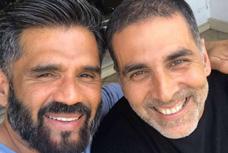
Send your response to: media@indianlink.com.au TO WIN A MOVIE TICKET!!
What’s the chit-chat here between ALIA BHATT and RANVEER SINGH?
Vandana D’souza: Don’t talk to me. I’m concentrating on my photo shoot.
Congrats, Vandana! You win a movie ticket!
Some other good ones: Rishi Singh: I’m a free bird and you are still stuck with ‘weight’y issues.
Leyla Singh: U better drop those weights & rescue me if I fall







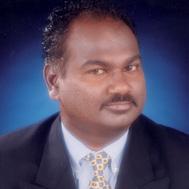
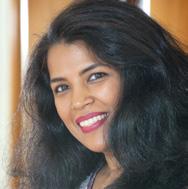







Minal Khona has been reading tarot cards for the last two decades. She uses her intuition and connect with the cards mostly to help people.



March 21 - April 19
A Libran influence will make you act in a balanced manner instead of in the Aries style – initial enthusiasm that quickly burns out. For new perspectives, you might seek professional help. Use your thoughts and mental strength to solve problems instead of thinking with your heart. A delay in legal matters or a lack of purpose causes anxiety at work; but you will complete a project successfully despite hurdles. Money is not a problem. An Aquarian might give you insights into your behaviour.
LEO

July 21 - Aug 22
Introspection, solitude, a pause in the progress of a situation and re-evaluation of one’s life’s goals dominate this month. You might feel disappointed in love and resigned to continuing alone. Someone will provide the missing link needed to ensure the success of an idea. Travel is predicted. Nervous exhaustion causes health issues but friends are supportive. Finances improve but after a while. Romantic relationships take a turn for the better. You have what it takes, just be patient.
SAGITTARIUS

Nov 22 - Dec 21
April 20 - May 20
Focus on your own work and be the star of the movie of your life. The universe will provide insights into the future and positive inputs make things better. Karmic ties with someone you love make it difficult to let go so nurture yourself well. A friend provides a safety net and you will stop wasting time on unproductive matters. Picking up a new skill enhances your long term prospects at work. Follow your heart and things will work out better than expected.
VIRGO
Aug 23 - Sep 22
Inner conflicts arising from unexpected desires make you seek clarity to effectively handle a situation. Romance will find you but you will be preoccupied with other things. You might feel out of control due to what seems like an insurmountable problem caused by others. Completion of a project brings gains. A love you had given up on might return. Health is good and obstacles are temporary. Be honest with yourself and keep a positive outlook at all times.
CAPRICORN


Dec 22 - Jan 19
Any break up in a relationship is only temporary though it is a very stressful time. Extreme stress due to ill health or hospitalisation of a parent or loved one is predicted. You might make losses but they are temporary. You might inherit some money or spiritual guidance. Stomach or prostate gland problems could occur. If married and having issues, it could lead to a separation due to an extra marital love affair. Things can work out so lie low and resolve issues.
A Sagittarian influence makes you outspoken and forthright this month; with a longing to be outdoors. You are future oriented at work and discussions, inventories, analyses and new activities keep you busy. Happy surprises are in store and you might even move closer to your childhood home. A certain health condition might need medical intervention. An upset stomach or anxiety due to repression could be the cause. You want to pursue philosophical interests till things get clear.
GEMINI
May 21 - June 20
Unpredictable and sudden changes lead to interesting experiences. You might have a dilemma about a situation as both options are equally tempting. Separation from a loved one causes frustration. Social commitments keep you busy. Ideas flow and good luck comes with diligent paperwork. A failure will prove to be a blessing in disguise as new avenues open up with better opportunities that are more aligned with what you want. Anxiety makes you look inwards for a solution.
LIBRA

Sep 23 - Oct 22
You look for material prosperity, an organised structure and stability in all things. You are no longer willing to settle for a love that does not feel 100 per cent right. Travel for work is predicted. Your teeth might need attention. Friends are supportive even though boring work or an extra marital affair causes stress. Success in everything is assured as Lady Luck shines on you. An opportunity for the foundation of a very successful future might present itself.
AQUARIUS


Jan 20 - Feb 18
The focus is on career, work and energies dedicated to self-improvement. You long for something and a lonely soul might enter your life and look after you. It could be someone already married. Good fortune through a benefactor and stability is indicated. Work remains stable and you will achieve success. An estranged ex might try to win you back. Your fears are put to rest as you regain perspective; family differences get resolved. If an offer doesn’t feel right, say no.
June 21 - July 20
You will indulge in some risk taking and look for the best course of action to an ongoing problem. Compensation for your efforts at work cheers you up and your attitude has a positive impact on workmates. Material gains in small sums in indicated. Social activities will be highlighted but don’t let yourself get forced into making a commitment. Change for the better is indicated and you might even get an employment offer. Consider seeking help if you feel stuck.
SCORPIO


Oct 23 - Nov 21
You might want to try something new after a setback in your current work. It could also be that your expectations have not been met and you are forced to look for alternates. Explore options fully but this time, go without any expectations. If you have been the cause for a fight in a relationship, be the first one to do damage control. You could be sad about something; be grateful for what you have and things get better.
PISCES

Feb 19 - March 20
Impromptu departures from home, rest and recreation from work and conventional relationships are the focus this month. An old flame could re-enter your life. You might have a backlog of correspondence to deal with at work. If single, marriage could be on the cards. You will recover if you have been sick lately and money prospects improve as well. Celebrations are in the offing as you get support from all quarters. Success through work, love and hobbies is indicated.
“An alligator can eat a quarter of its bodyweight in a single meal, equivalent to a human eating 89 bowls of rice,” a reader told me in an electronic conversation.
I was not impressed. Ever seen teenagers eat? Eighty-nine bowls is just the appetiser. This exchange was triggered by a March 3 news report that a snake in Florida was seen eating a deer larger than itself. The snake became a new Dining Hero for my son and me, replacing TV’s Miss Piggy, whose sensible eating plan is: “Never eat anything you cannot lift.”
So how did the snake eat something larger than it? Snakes temporarily dislocate their upper and lower jaws so that they can eat big things, including cows and buffaloes, said a herpetologist friend via email. (Humans have to do the same when eating those extra-tall burgers.)
A bird-lover in my office commented that some songbirds eat a meal of insects roughly every two seconds during their waking hours. That’s 30 meals a minute!
Definitely worth adding them to our Dining Heroes list.
Listening to this conversation was a colleague who was on a diet where you have six small meals a day. (I told her I totally loved the sound of that, except for the word “small”.)
The discussion became a competition. “Forget alligators. A growing hummingbird consumes twice its weight in food every single day,” the bird-lover said. Impressive. In human terms, that would be equivalent to a teenaged boy eating a couple of sheep a day. Could teens really do that? I texted one to ask. “If you put them on a pizza, or cooked them as rogan josh, sure,” was his reply (after translation from teenspeak).
But hang on, you say, would that not be dangerous? I asked a doctor friend, and he said that physicians used to think it was impossible to eat yourself to death. But in 1985, medical journal The Lancet reported a case in which a 23-year-old woman consumed one pound (450 grams) of liver,
Match required for my sister, Aus citizen, Hindu Punjabi (non-veg) 5’0”, slim/ fair/beautiful, 1988-born, Masters of Professional Accounting, working in Melb. Aus Citizen/PR req. Email melbournejodi@yahoo.com
Seeking professionally qualified, well-settled match in Australia for convent educated, BTech MBA, 29, 5’2” fair, slim, smart Kayastha girl, currently working in Ernst & Young, Delhi, India. Caste no bar. Please send details with photo to sudhirsaxena6116@gmail.com
Well-settled family in Australia seeks a match for a 5’2” Ramgarhia Sikh girl, 28 years old. The girl has Australian PR and is B Tech in Computer Science. Please contact 0430 076 580
Seeking professionally qualified settled match for Sydney based, never married Aus citizen, Hindu, Punjabi Khatri 45, 5’3”, slim, fair, attractive girl. Girl is postgraduate and is working on a good position in government organisation. Please send details with photo to Indsyd2016@gmail.com

Seeking professionally qualified, well-settled match for Sydney based, never married Aus citizen, Hindu, Punjabi Khatri boy, 44, 6’, athletic built. He is project manager with engineering background and is working in a private organisation. Please send details with photo to Indsyd2016@gmail.com
List your matrimonial with Indian Link!


Email sales@indianlink.com.au
or phone (02) 9279 2004
The T-Rex, a nine-patty cheeseburger created by an outlet of Canadian burger chain Wendy’s, has been safely extinct since 2013

two pounds of kidneys, an eight ounce steak, two eggs, a pound of cheese, two slices of bread, a pound of mushrooms, two pounds of carrots, a cauliflower, 10 peaches, four pears, two apples, four bananas, two pounds of plums, two pounds of grapes, and two glasses of milk. She was rushed to hospital where surgeons cut her open – but she died before they could remove her lunch.
It reminded me of a true story from this column in 2014. A woman ate so much to celebrate Lunar New Year that she exploded. A nutritionist at Beijing Friendship Hospital said the 58-yearold patient felt ill from overeating and demanded a lunchectomy. The electric
knife used by a surgeon provided a spark which met combustible gases from alcohol, causing a messy explosion in the operating theatre.
I don’t wish to be morbid or anything, but you have to admit, if you have to die, this is pretty cool way to go. You eat all your favourite foods, and before even your weighing scale can reproach you, BOOM, you’re done.
And someone else gets to clean up the mess. Now, please excuse me while I go dislocate my jaw.
Help the Australian Border Force keep our community safe
The Australian Border Force protects our border and our community. ABF officers work to stop dangerous items like drugs and firearms from coming into Australia, and to stop visa fraud and the trafficking and exploitation of foreign workers.
Sometimes, threats can be detected within our border. So if you see something suspicious or something that just doesn’t feel right flag it anonymously with Border Watch and help the Australian Border Force keep our community safe.
Flag suspicious immigration, customs and border-related activity at australia.gov.au/borderwatch

Find out how the Australian Government is helping Australians at all stages of life find the right home.
Visit homeownership.gov.au
The First Home Super Saver Scheme helps you save faster through voluntary super contributions. You can now take advantage of generous tax concessions and contribute up to $15,000 in any one financial year, and up to $30,000 in total.

We’ve committed $1 billion to accelerate the supply of new housing and ensuring underutilised Commonwealth land is put to better use, including land that is suitable for new homes.
If you are 65 and over and want to sell your current home, you can now put up to $300,000 from the sale, per person, into your super account. This offers greater flexibility and extra tax advantages to older Australians.
